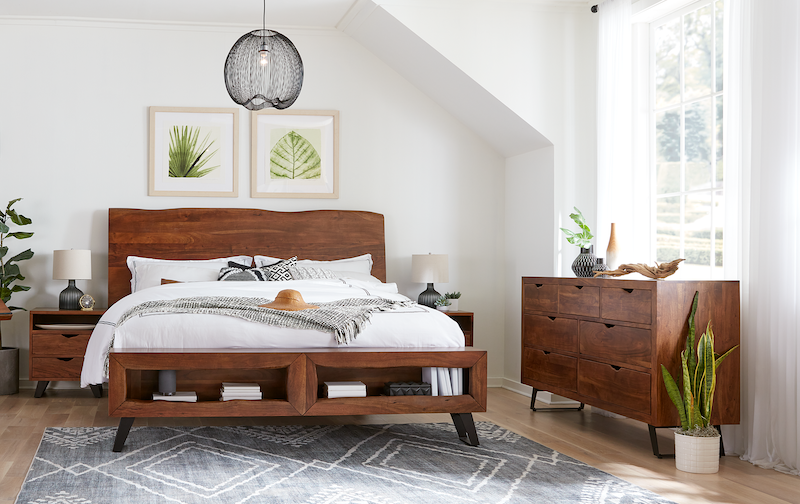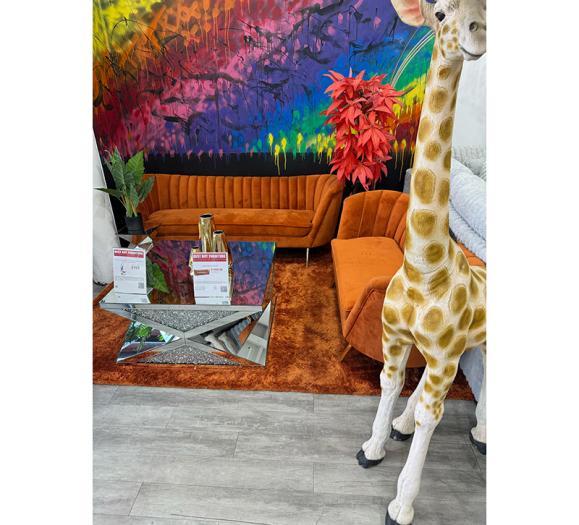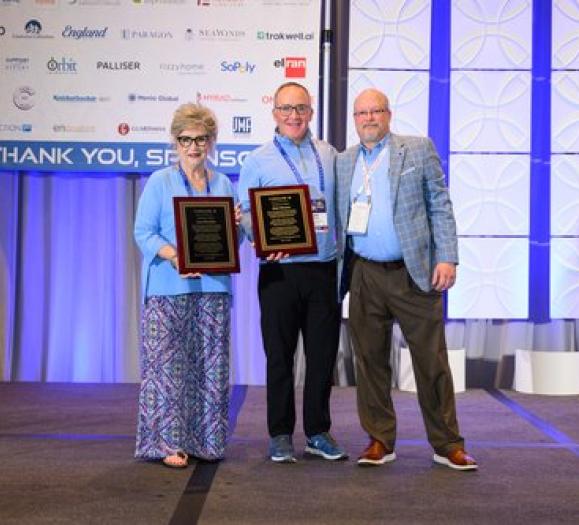Sustainable furniture has emerged as a potent force within the industry, leaving an impact on our planet and transforming the way we approach interior design. With an unwavering commitment to responsible sourcing and eco-friendly manufacturing practices, these meticulously crafted pieces not only exude beauty, but also serve as a catalyst for positive change.
Sustainable furnishings have become a symbol of a more mindful approach to both aesthetics and consumption. Their influence resonates far beyond the confines of the furniture industry, inspiring a growing movement towards sustainable living. Greenington Furniture, for example, crafts modern designed furniture using one of the earth’s most sustainable and rapidly renewable resources — solid bamboo. The group also utilizes a zero-waste approach, making use of the entire bamboo culm within the manufacturing process. This ensures that 100 percent of the material is used efficiently.
“Even the sawdust generated during production is repurposed to generate steam for our dry kiln room or sent to local factories that utilize bamboo in their own manufacturing processes,” says Yang Lin, Greenington’s Owner and President.
Bamboo, specifically Moso timber bamboo, is a rapidly renewable resource that can be harvested every five years; far quicker than traditional hardwoods such as oak or maple. With its growth rate of up to 36 inches in a day, bamboo replenishes itself rapidly after harvesting, making it an ideal choice for sustainable furniture manufacturing.
“This rapid growth rate makes Moso timber bamboo a highly sustainable and earth friendly material choice,” he says. “It’s also a more sustainable alternative to endangered hardwood forests.”
According to Lin, Greenington’s ISO 9001 Quality Management and ISO 14001 Environment Management certified factories operate under strict quality control within the northern China bamboo forest. They meet international standards at every stage of production. The proximity of their factories to the raw materials also allows for reduced transportation, minimizing the brand’s carbon footprint.
“We also use recycled pallets, consisting of reclaimed lumber and our recycled cardboard boxes are compostable, decomposing over time,” says Lin. “Our new Greenington factory will use rooftop solar panels, converting sunlight directly into electric power, reducing operating costs and providing clean energy.”
Greenington also offers a range of trending finish options that appeal to consumers seeking sustainable furniture. According to Lin, the brand employs a unique mechanical process called carbonization, resulting in beautiful grain patterns and continuous color throughout the bamboo material. This unique process involves specific recipes which use heat, steam and pressure to achieve the variety colors Greenington is looking for in
the fibers.
“These finishes are achieved without the use of additional chemicals or coatings, making them a natural and non-toxic choice for environmentally conscious consumers,” he says. “In addition, the mechanical finishes offer a rich variety of highlights and lowlights present in the material and not normally found in a stain finish.
“This chemical-free mechanical finish not only showcases the material’s inherent beauty, they also enhances its durability, resistance to warping, cracking and other forms of damage,” Lin says.
Sustainably-made performance fabrics are also on trend. Four Hands’ Fiqa fabric, for example, highlights another commitment to sustainability within the upholstery segment.
According to Rick Lovegrove, Four Hands President of Upholstery, Fiqa is made from fully recyclable materials and uses a water-free solution dying process for long-lasting and fade-resistant color. It can be used on both indoor and outdoor products, offering a versatile material for any space All Fiqa products are also UV-resistant, water-repellent, bleach-cleanable, pet-friendly, antifungal and free of PFCs.
“It is also medical-use certified, ensuring that zero harmful substances are used in its processing,” says Lovegrove.
Embracing the natural story, Four Hands has also formed a partnership with Libeco and Belgian Linen, promoting the use of natural and organic fabrics in their assortment. This collaboration aims to minimize the use of artificial materials and prioritize environmentally friendly alternatives.
Additionally, the company introduced it’s all-new Eucapel leather during July’s Las Vegas Market; a carbon-neutral, vegetable-tanned leather created in Uruguay.
“This process uses eucalyptus leaves to tan the leather versus using chrome or any harsh chemicals,” Lovegrove says. “That was a big draw for Four Hands, because it impacts the environment twofold.”
Incorporating naturally fallen leaves into the tanning process — which are mostly discarded by the paper industry — simultaneously clears the forest floors and reduces the risk of wildfires, according to Lovegrove.
“Those leaves can become very dry in the Uruguay heat,” he says. “Using them within this process is really a win-win for everyone.”
Home Trends & Design, a manufacturer of eco-friendly, handmade furniture, was also founded with the goal of pushing the home furnishings industry toward more sustainable future. Home Trends has been a bulwark against the use of toxic finishes and coatings, non-renewable resources and safe manufacturing practices, even extending its care to its talented artisan employees.
“This includes pioneering the use of water-based finishes and non-toxic lumber treating processes that have now become the industry standard,” says Hank Cravey, CEO of Home Trends & Design. “Our current initiatives include developing more reclaimed and sustainable materials and processes, as well as moving toward non-plastic eco-packaging.”
Sourcing locally helps Home Trends & Design decrease carbon emissions related to the transportation of raw materials. Sourcing sustainability grown hardwoods such as teak, mango and acacia that are native to Southeast Asia is both crucial to keeping its supply chain moving, and in reducing impact to the environment.
“We are also well known for our products manufactured using reclaimed materials,” Cravey says. “We recycle and reuse wood and metal from a variety of sources, and give them new life as heirloom quality caseloads.”
Implementing these sustainable practices helps set the tone for the industry, and has made a positive overall impact on how other players select and source raw materials. In terms of trends, Cravey says several sustainable practices can be used in making most styles and finishes of products.
“It’s really a matter of pennies on the dollar to have a significant effect on the sustainability/eco-friendly practices in this industry compared to others,” he says. “I would say current trends are refined industrial styling, and organic and natural shapes and materials.”
Over the years, interest in sustainable products has grown not only within the furniture industry, but across the global economy. As our population grows, the need to be a good steward of our planet becomes more and more imperative. This has led consumers to be more discerning in their purchases, leading many to choose quality sustainably made products over cheaper, mass-produced alternatives, according to Cravey.
“The trend is one that continues to grow as more and more people choose to support sustainable brands in order to help mitigate the effects of climate change,” he says.
At Copeland Furniture, locally sourced materials are at the heart of its sustainable practices. By handcrafting their product line in Vermont with sustainably harvested U.S. hardwoods, they minimize the environmental impact associated with long-distance transportation.
“By building products for the domestic market that are made of American raw materials, we have a fraction of the logistics-driven impact as products sourced from overseas and utilizing a global supply chain,” says Ben Copeland, Director of Sales and Marketing. “This approach not only reduces emissions but also supports local economies and reduces reliance on non-renewable resources.”
More than 90 percent of Copeland’s electrical and heat consumption is also sourced from renewable energy produced onsite at their factory. By relying on renewables, they significantly reduce their carbon footprint.
Consumers who are interested in sustainability tend to have a built-in preference for designs/materials/finishes that are naturalistic in their expression, according to Copeland. This means trends are beginning to learn toward lower-gloss finishes, earth-toned fabrics and natural materials.
“Each subsequent generation seems more concerned than the previous one and with millennials coming into peak buying power, we think interest in sustainability will skyrocket,” he says. “We view sustainability as the stewardship of resources such that they will be available for ours and future generations.”







